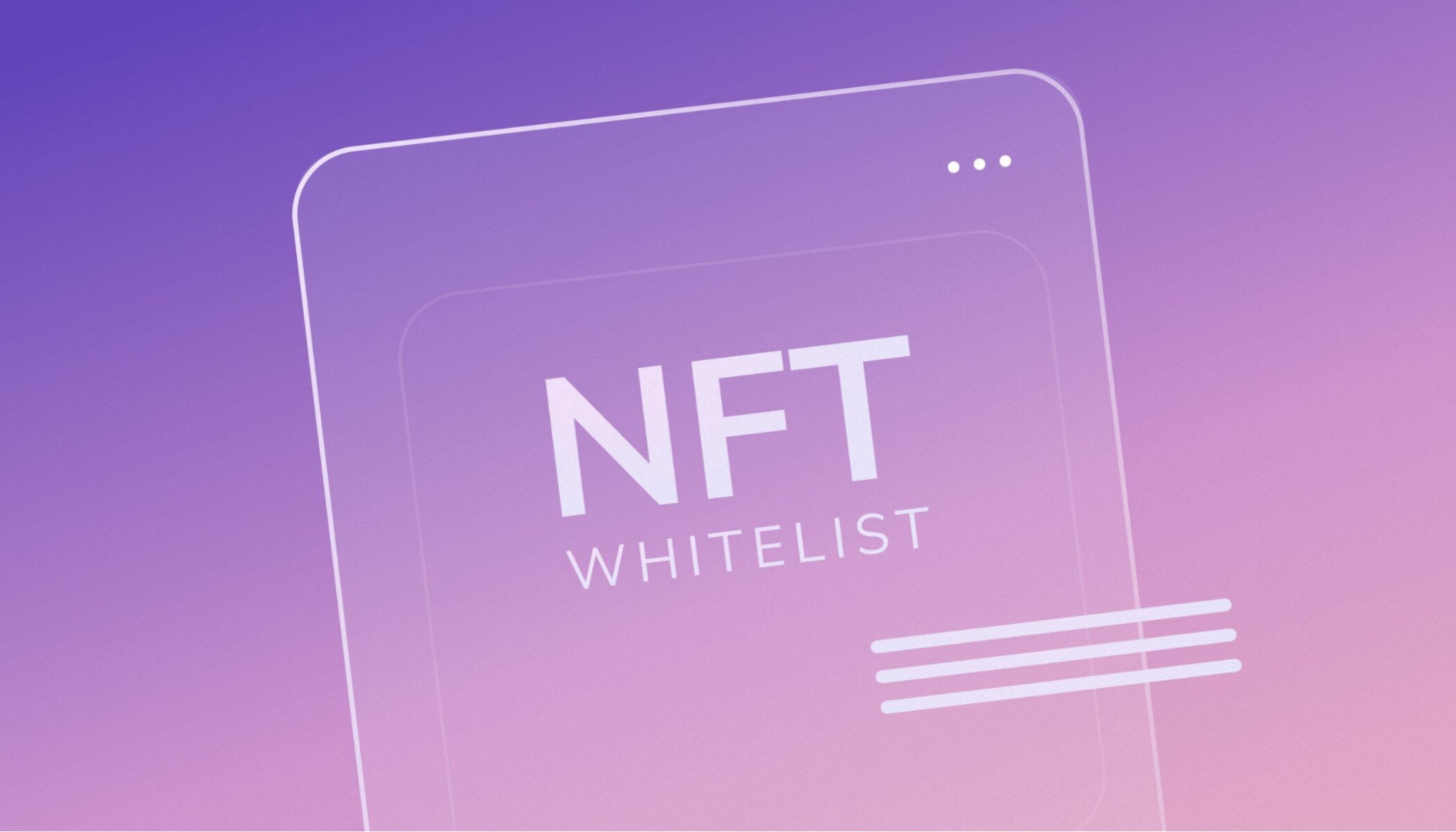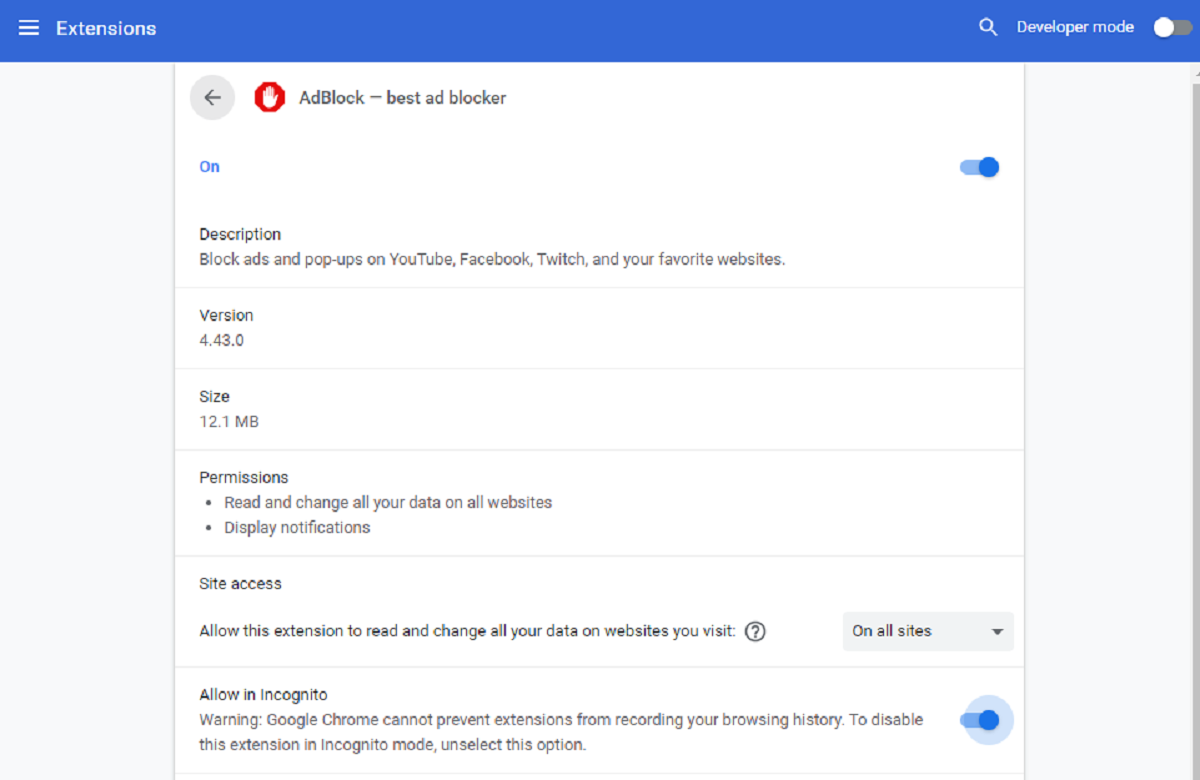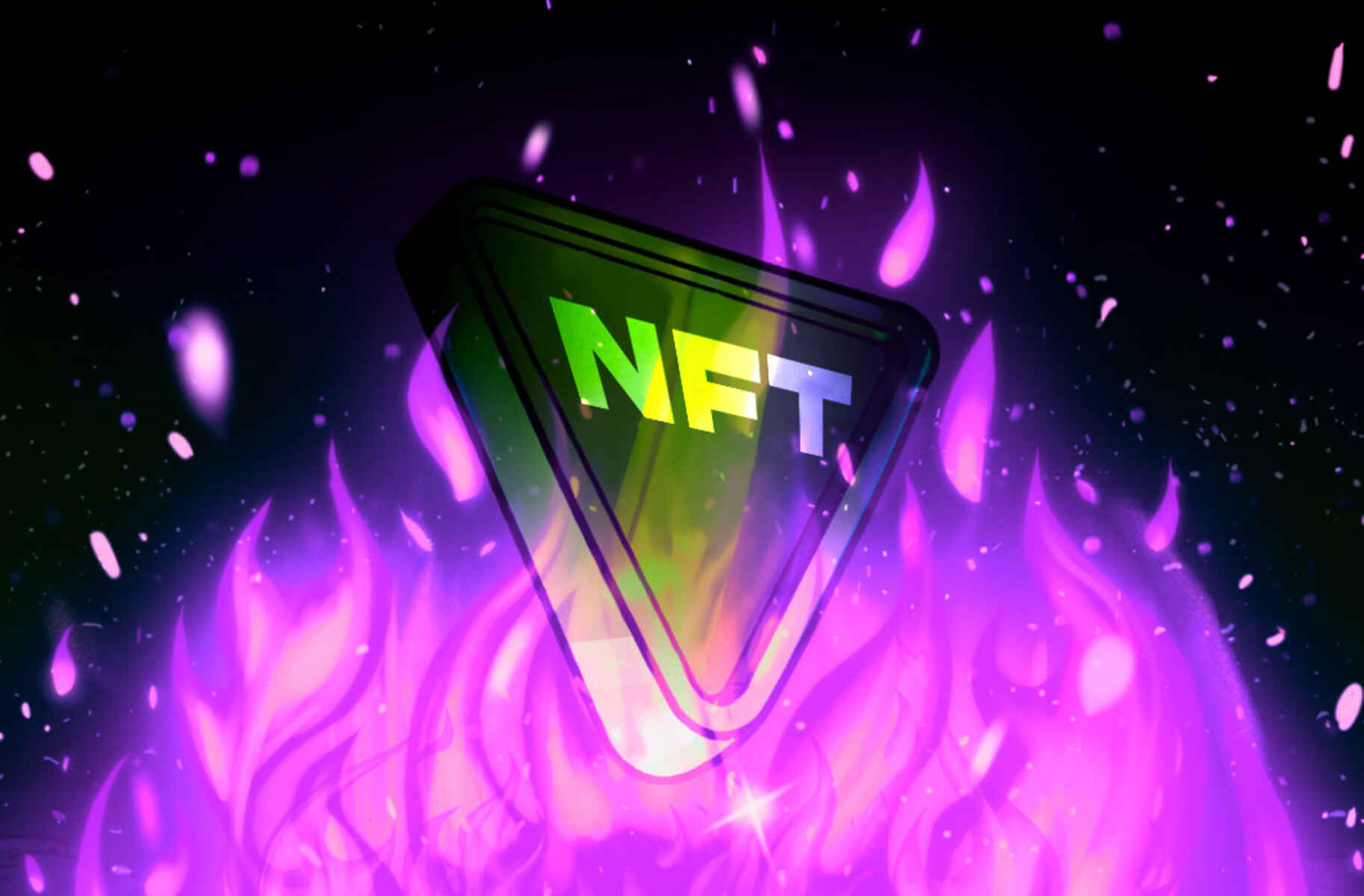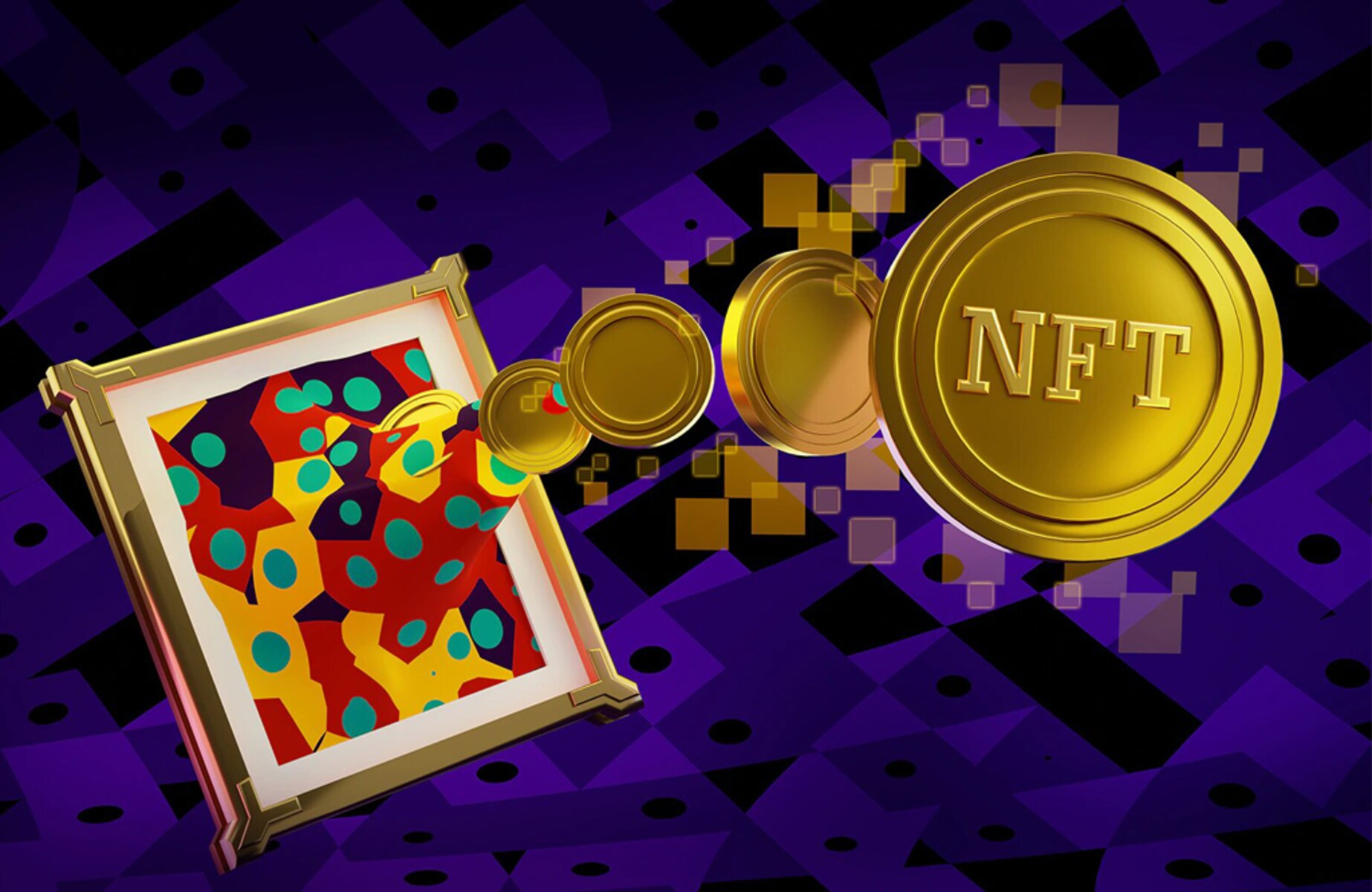Introduction
As the world of blockchain technology continues to evolve, new innovative concepts and applications are constantly emerging. One such concept is the Whitelist Non-Fungible Token (NFT), which is gaining significant attention in the digital asset space. Whitelist NFTs provide a unique approach to ownership and access control, offering a range of benefits and possibilities.
In simple terms, a whitelist NFT is a token-based asset that grants specific privileges or access rights to the holders. Unlike traditional NFTs that are often freely traded and accessible to anyone, whitelist NFTs add an additional layer of exclusivity and control by allowing only pre-approved individuals or entities to interact with the asset. This exclusive access can be based on various criteria, such as ownership of other assets, participation in specific events, or meeting certain requirements set by the creator.
The concept of whitelist NFTs is closely related to the idea of membership or VIP status. Just as a VIP pass grants special privileges at an event or venue, a whitelist NFT serves as a digital equivalent, offering unique opportunities or benefits to its holders. This concept is particularly appealing in industries like art, music, gaming, and digital collectibles, where scarcity and exclusivity are highly valued.
With the explosive growth of the NFT market, whitelist NFTs have garnered attention for their potential to enhance the value and utility of digital assets. By leveraging whitelist NFTs, creators can establish closer connections with their audience and reward loyal individuals with exclusive perks. Similarly, collectors and enthusiasts are drawn to whitelist NFTs as they offer a chance to own rare and coveted digital assets, thereby increasing their status and prestige within the community.
However, it’s important to note that the concept of whitelist NFTs is not without its challenges and considerations. There are questions surrounding the fairness and transparency of the whitelisting process, as well as the potential for centralization and exclusionary practices. Striking a balance between exclusivity and inclusivity is crucial to ensure the long-term viability and sustainability of whitelist NFTs.
In the following sections, we will delve deeper into the concept of whitelist NFTs, explore how they work, examine their benefits and use cases, and discuss the future prospects of this intriguing digital asset format.
Definition of Whitelist NFT
A Whitelist Non-Fungible Token (NFT) is a unique digital asset that grants specific privileges or access rights to its holders. Unlike traditional NFTs that are freely accessible to anyone, whitelist NFTs add an additional layer of exclusivity and control by allowing only pre-approved individuals or entities to interact with the asset.
This exclusivity is achieved through the implementation of a whitelist, which is a curated list of approved addresses associated with the whitelist NFT. The whitelist can be set by the creator of the NFT and is typically based on certain criteria or conditions. For example, the whitelist can include individuals who hold specific assets, have participated in a token sale, or meet certain requirements established by the creator.
When a whitelist NFT is created, the creator can define the privileges or benefits that the token holder will receive. These can vary depending on the context and purpose of the NFT. For example, a whitelist NFT for a virtual event may grant access to exclusive content, early ticket purchasing options, or VIP experiences. In the world of art and collectibles, a whitelist NFT could provide special rights, such as voting on future artwork releases or receiving limited edition perks.
Furthermore, whitelist NFTs can be traded and transferred between addresses. However, the access rights associated with the whitelist NFT are tied to the specific addresses on the whitelist. In other words, even if the whitelist NFT changes hands, only the approved addresses will retain the privileges and access rights.
It is essential to highlight that whitelist NFTs are built on blockchain technology, specifically on smart contract platforms such as Ethereum. The transparency and security provided by blockchain allow for the tracking and verification of the whitelist NFT’s ownership and associated privileges. This ensures that the creator’s intent and the integrity of the whitelist NFT ecosystem are maintained.
Overall, the definition of a whitelist NFT can be summarized as a unique digital asset that grants specific privileges or access rights to approved individuals or entities. By implementing a whitelist and leveraging blockchain technology, whitelist NFTs add a layer of exclusivity, ownership control, and unique opportunities to the world of digital assets.
How Does Whitelist NFT Work?
Whitelist Non-Fungible Tokens (NFTs) operate on the principles of blockchain technology and smart contracts to ensure the exclusivity and control of the asset. Here is a step-by-step breakdown of how whitelist NFTs work:
- Creation of the Whitelist NFT: The process begins with the creator minting and deploying a whitelist NFT on a blockchain platform like Ethereum. The creator determines the criteria for approval and the privileges associated with the whitelist NFT.
- Establishing the Whitelist: The creator curates a list of approved addresses that will have access to the whitelist NFT. These addresses can be added manually or through an automated process, depending on the creator’s preference and the platform used.
- Transfer and Trading: Once the whitelist NFT is created, it can be transferred and traded between addresses. However, the privileges tied to the whitelist NFT remain exclusive to the addresses on the whitelist. This means that the benefits and access rights associated with the whitelist NFT are retained by the approved addresses, regardless of ownership changes.
- Verification and Validation: Blockchain technology ensures the integrity and transparency of whitelist NFTs. The ownership and approval status of the whitelist NFT can be verified on the blockchain, providing a decentralized record of the asset’s existence and associated privileges.
- Accessing the Privileges: Holders of the whitelist NFT can unlock the associated privileges based on the criteria set by the creator. For example, if the whitelist NFT grants access to exclusive content, the approved addresses can access and consume that content. If the whitelist NFT provides voting rights, the holders can participate in the decision-making process.
- Monitoring and Governance: The creator of the whitelist NFT retains control over the whitelist, allowing them to manage, update, or modify the approved addresses if needed. This ensures that the whitelist NFT ecosystem remains aligned with the creator’s vision and objectives.
By leveraging blockchain technology, smart contracts, and a curated whitelist, whitelist NFTs enable creators to offer exclusive rights and privileges to their audience. They provide a mechanism for creating scarcity, rewarding loyalty, and fostering engagement within the digital asset ecosystem.
It is worth noting that the specific mechanics and functionalities of whitelist NFTs may vary depending on the platform and implementation. However, the underlying principle of granting selective access and privileges through a whitelist remains consistent across different whitelist NFT projects.
Benefits of Whitelist NFTs
Whitelist Non-Fungible Tokens (NFTs) offer a range of benefits to creators, collectors, and participants in the digital asset ecosystem. Here are some of the key advantages of whitelist NFTs:
- Exclusivity and Scarcity: Whitelist NFTs introduce an element of exclusivity and scarcity, creating a sense of value and desirability among collectors. By restricting access to a select group of individuals or entities, whitelist NFTs elevate the perceived worth of the digital asset.
- Rewarding Loyalty and Engagement: By using whitelist NFTs, creators can reward their loyal supporters and participants. The exclusive privileges and benefits associated with whitelist NFTs can incentivize engagement, foster community loyalty, and encourage active involvement.
- Control over Ownership and Distribution: Whitelist NFTs allow creators to maintain control over the ownership and distribution of their digital assets. By designating approved addresses through the whitelist, creators can ensure that their work is accessed and enjoyed by a trusted audience, minimizing the risk of unauthorized use or exploitation.
- Enhanced Value and Monetization: The exclusivity and limited access offered by whitelist NFTs often increase the perceived value of the digital asset. Collectors and enthusiasts are willing to pay a premium for the opportunity to own and interact with unique and prized NFTs, providing creators with additional monetization opportunities.
- Personalization and Customization: Whitelist NFTs can be tailored to offer personalized experiences and benefits to their holders. Creators can design and implement specific privileges that align with their artistic vision, themes, or brand identity, creating a more personalized and immersive experience for the whitelist NFT community.
- Incentivizing Early Adoption: The early adopters of a project or community can be rewarded through whitelist NFTs, providing them with exclusive benefits or perks. This incentivizes early participation and fosters a sense of belonging within the community.
- Driving Community Engagement: Whitelist NFTs encourage active participation and engagement within the community. Holders of whitelist NFTs may gain voting rights, allowing them to influence the direction, future releases, or decisions related to the project. This involvement leads to a stronger sense of ownership and community-driven development.
- Verified Authenticity: The use of blockchain technology ensures the authenticity and provenance of whitelist NFTs. The immutable nature of the blockchain provides a verifiable and transparent record of ownership, validating the rarity and uniqueness of the digital asset.
These benefits make whitelist NFTs an appealing option for creators and collectors alike, enabling them to tap into the potential of the NFT market while offering exclusive experiences, rewards, and opportunities within their respective communities.
Use Cases for Whitelist NFTs
The concept of Whitelist Non-Fungible Tokens (NFTs) opens up a wide range of use cases across various industries. Here are some notable examples:
- Virtual Events and Experiences: Whitelist NFTs can be used to grant access to exclusive virtual events, conferences, concerts, or exhibitions. Holders of the whitelist NFTs can participate in live interactions, view special content, or enjoy immersive experiences that are not accessible to the general public.
- Art and Collectibles: In the world of art and digital collectibles, whitelist NFTs can provide unique privileges to collectors. Holders of whitelist NFTs may gain early access to limited edition artwork releases, receive additional content related to the artwork, or enjoy special perks like virtual exhibitions or meet-and-greets with the artists.
- Gaming and Digital Assets: Whitelist NFTs can add value and exclusivity to in-game items, virtual land, or rare digital assets within the gaming industry. Players who hold whitelist NFTs can unlock special abilities, gain access to exclusive characters or locations, or participate in unique gaming events and tournaments.
- Membership and VIP Programs: Whitelist NFTs can serve as digital membership or VIP passes, granting exclusive privileges to holders. This can include benefits such as early access to product releases, discounts, personalized services, or a higher level of customer support.
- Community Governance: Whitelist NFTs can be utilized for community-driven decision making and governance. Holders of whitelist NFTs may have voting rights, allowing them to participate in shaping the future direction of a project, influencing roadmap decisions, or selecting new features to be implemented.
- Content Access and Licensing: Whitelist NFTs can be used in the media and entertainment industry to control access to premium content. Content creators can offer whitelist NFTs that provide exclusive access to films, music, books, or online courses, ensuring that only approved individuals can consume the content.
- Reward Programs and Loyalty Points: Whitelist NFTs can be used as a medium for loyalty programs, rewarding customers for their continued support. Holders of whitelist NFTs may receive loyalty points, exclusive discounts, or special offers from participating businesses.
- Identity Verification: Whitelist NFTs can be leveraged for identity verification purposes, granting access to secure platforms or services. By associating whitelist NFTs with verified user identities, platforms can ensure a higher level of security and trust within their ecosystem.
These use cases demonstrate the versatility and potential of whitelist NFTs across various industries. By offering exclusive privileges and leveraging the benefits of blockchain technology, whitelist NFTs create unique opportunities for engagement, monetization, and community building.
How to Create a Whitelist NFT
Creating a Whitelist Non-Fungible Token (NFT) involves several steps that utilize blockchain technology. Here’s a general guide on how to create a whitelist NFT:
- Choose a Platform: Select a blockchain platform that supports the creation of NFTs and enables the implementation of whitelist functionality. Ethereum is the most popular platform for NFTs, but other platforms like Flow, Binance Smart Chain, or Polkadot may also offer whitelist NFT capabilities.
- Prepare Your Artwork or Content: Create or prepare the digital artwork, music, video, or any other digital asset that you want to tokenize as a whitelist NFT. Ensure that you have the appropriate rights and permissions to use and distribute the content.
- Mint the Whitelist NFT: Use minting platforms or smart contract tools to create and deploy your whitelist NFT on the chosen blockchain platform. Specify the desired parameters, including the name, description, and metadata associated with the NFT.
- Define Whitelist Criteria: Determine the criteria for approval and access to the whitelist NFT. This can be based on ownership of specific assets, participation in certain events, meeting specific requirements, or any other conditions that align with your goals as a creator.
- Curate the Whitelist: Create a curated list of approved addresses that will have access to the whitelist NFT. You can manually add the addresses or design a process for automated approval based on the defined criteria. Make sure to consider the fairness and transparency of the whitelisting process.
- Specify Privileges and Benefits: Determine the privileges, benefits, or special features that whitelist NFT holders will receive. This could include exclusive content access, early purchasing options, voting rights, or other unique experiences related to the NFT.
- Deploy the Whitelist NFT: Deploy the whitelist NFT smart contract, linking it to the curated addresses and specifying the associated privileges. Ensure that the smart contract is properly tested, audited, and secure to protect the integrity of your whitelist NFT.
- Market and Distribute the Whitelist NFT: Promote your whitelist NFT to your target audience through various marketing channels. Communicate the unique value proposition and benefits of the whitelist NFT to generate interest and drive adoption. You can engage with collectors, enthusiasts, or potential participants through social media, NFT marketplaces, or dedicated communities.
- Manage and Interact with the Whitelist NFT Community: Monitor and engage with the whitelist NFT community, ensuring that the privileges and benefits tied to the whitelist NFT are effectively delivered. Regularly update the white list if necessary, provide support to holders, and foster a sense of community among whitelist NFT holders.
These steps provide a general roadmap for creating a whitelist NFT. However, it’s important to note that the implementation may vary depending on the chosen blockchain platform, the technical tools used, and the specific requirements of the project.
Important Considerations for Whitelist NFTs
While Whitelist Non-Fungible Tokens (NFTs) offer exciting opportunities, there are several important considerations to keep in mind when creating and managing whitelist NFT projects:
- Fairness and Transparency: The process of approving addresses for the whitelist should be fair, transparent, and well-defined. Clear guidelines and criteria should be established to ensure that participants understand the requirements and have equal opportunities to be included in the whitelist.
- Exclusivity versus Inclusivity: Striking a balance between exclusivity and inclusivity is crucial. While exclusivity adds value, it’s important not to alienate potential participants or create a perception of exclusivity that can harm the overall community. Consider implementing mechanisms to reward early adopters and incentivize participation.
- Security and Privacy: Security measures should be in place to protect the whitelist NFTs and associated privileges. Consider using secure smart contract development practices and conducting thorough security audits to minimize risks. Additionally, ensure that user privacy is respected and that sensitive information is handled securely.
- Whitelist Management: Actively manage the whitelist, regularly reviewing and updating the list if necessary. This ensures that the whitelist remains accurate and up-to-date, reflecting changes in ownership or eligibility criteria. Transparently communicate updates to the whitelist community to maintain trust and avoid confusion.
- Community Engagement and Support: Foster a sense of community and actively engage with whitelist NFT holders. Provide channels for communication and feedback, respond to inquiries, and listen to the community’s suggestions and concerns. This helps to build trust, loyalty, and a vibrant ecosystem around the whitelist NFT project.
- Legal and Regulatory Compliance: Consider the legal and regulatory implications of your whitelist NFT project. Ensure that you are compliant with relevant laws, including intellectual property rights, securities regulations, and data protection regulations. Consult legal professionals to ensure that your project operates within the boundaries of the law.
- Evaluation of Scalability: Consider the scalability of the whitelist NFT project. As the number of whitelist NFT holders grow, ensure that the infrastructure can handle increased participation and that the associated privileges can be effectively delivered to a larger audience without compromising the quality of the user experience.
- Feedback and Iteration: Actively seek feedback from the whitelist NFT community and be open to making improvements and iterating on the project. The needs and preferences of the community may evolve over time, and incorporating feedback demonstrates a dedication to creating a better experience for whitelist NFT holders.
By taking these considerations into account, creators and participants can navigate the challenges associated with whitelist NFTs and create a more sustainable and rewarding ecosystem for everyone involved.
The Future of Whitelist NFTs
Whitelist Non-Fungible Tokens (NFTs) have the potential to play a significant role in the future of the digital asset landscape. Here are some key factors that indicate the bright future of whitelist NFTs:
- Increased Customization: As blockchain technology and smart contracts continue to evolve, the customization options for whitelist NFTs are expected to expand. Creators will have more flexibility in designing unique privileges, benefits, and experiences for whitelist NFT holders, leading to more immersive and personalized interactions.
- Integration with DeFi: DeFi (Decentralized Finance) protocols can potentially integrate with whitelist NFTs, creating new opportunities for liquidity and financial innovations. Whitelist NFTs can serve as collateral for loans, be utilized as governance tokens within DeFi platforms, or participate in yield farming to generate additional value for the holders.
- Enhanced Interoperability: As blockchain interoperability improves, whitelist NFTs could interact seamlessly across different blockchain platforms. This interoperability allows holders to leverage their whitelist NFTs in various ecosystems, expanding the benefits and utility of their digital assets.
- Real-World Asset Integration: Whitelist NFTs have the potential to extend beyond digital assets and integrate with real-world assets. By bridging the gap between physical and digital ownership, whitelist NFTs can unlock new possibilities for fractional ownership, provenance tracking, and marketplaces for real-world assets such as real estate, collectibles, and intellectual property rights.
- Sustainable Ownership Solutions: Concerns about the environmental impact of blockchain technology are driving the development of more sustainable solutions. The future of whitelist NFTs may see the incorporation of eco-friendly blockchain platforms or sustainability initiatives that offset the carbon footprint associated with NFT transactions, ensuring a more environmentally conscious ecosystem.
- Maturity in Standards and Infrastructure: With the rapid growth of the NFT market, industry standards and infrastructure for whitelist NFTs will become more mature and standardized. This will facilitate better interoperability, easier creation and management of whitelist NFTs, and improved user experiences. As a result, the adoption of whitelist NFTs is expected to increase across a wider range of industries.
- Mainstream Adoption: Whitelist NFTs have entered the mainstream consciousness, attracting the attention of individuals, businesses, and institutions around the world. As awareness and understanding of the potential benefits of whitelist NFTs increase, more creators and collectors will embrace this concept, leading to broader adoption and integration in various sectors.
With ongoing innovations, advancements in technology, and a growing interest in digital assets, the future of whitelist NFTs holds great promise. These unique digital assets have the potential to reshape the way we access and interact with digital content, create value, and build communities around exclusive experiences and benefits.
Conclusion
Whitelist Non-Fungible Tokens (NFTs) offer a new dimension to the world of digital assets, providing exclusivity, control, and unique opportunities for creators, collectors, and participants. By leveraging blockchain technology and a curated list of approved addresses, whitelist NFTs introduce an additional layer of value and interaction.
Throughout this article, we have explored the definition, workings, benefits, use cases, creation process, important considerations, and future potential of whitelist NFTs. These unique digital assets open up a plethora of possibilities across industries such as art, gaming, virtual events, membership programs, and more.
Creators can reward their loyal supporters, offer personalized experiences, and maintain control over the ownership and distribution of their digital assets. Collectors and participants can access exclusive content, gain voting rights, and enjoy unique privileges that signal their status within the community. Whitelist NFTs present an opportunity to bridge the gap between the digital and physical realms, redefine ownership, and foster engagement within communities.
While there are considerations to address, such as fairness, transparency, security, and scalability, the future of whitelist NFTs appears promising. Continued technological advancements, improved interoperability, and evolving industry standards will pave the way for wider adoption and integration of whitelist NFTs across various sectors.
As the realm of digital assets continues to evolve, whitelist NFTs provide an exciting avenue for creators and participants to connect, collaborate, and actively shape the landscape. By embracing the potential and exploring the possibilities of whitelist NFTs, individuals and businesses can tap into a world of exclusivity, value, and engagement, ushering in a new era of digital ownership and experiences.

























